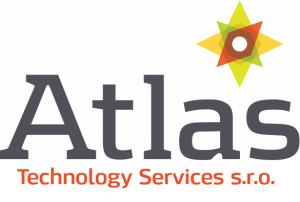Over two-thirds of Sustainable Development Goals could be bolstered by emerging tech, including AI and blockchain
14.02.2020Company: PricewaterhouseCoopers Česká republika, s.r.o.
New report examines how technology advances can drive large scale, sustainable change across industries and deliver the Sustainable Development Goals
Two-thirds of the 169 targets underpinning the global Sustainable Development Goals could be bolstered by technological innovation according to a new study by the World Economic Forum and PwC.
The new study, Unlocking Technology for the Global Goals, analyses over 300 use cases of emerging technologies linked to the 4th Industrial Revolution (4IR) including Artificial Intelligence (AI), Blockchain, Internet of Things, 5G and drones to build the case of how advanced technologies could do more to accelerate progress towards the Global Goals. The study explores the extent to which the opportunity is being realised, the barriers and risks to scaling application and what needs to be done to unlock the enormous potential.
Emerging technologies have high impact potential
Overall new technologies have the potential for a ‘high’ impact across over half of the Goals. The study also finds that big data platforms and AI are already supporting progress towards each and every one of the Global Goals.
Across the Global Goals, and their 169 targets, 70% of the targets could be enabled by new technology applications already in deployment. 4IR technology applications today were found to play an important role for 10 of the Global Goals. In particular, Health (Goal 3), Clean Energy (Goal 7), and Industry, Innovation and Infrastructure (Goal 9) are the goals in which the highest number of present day mapped technology applications was found.
Celine Herweijer, Partner and Global Innovation and Sustainability Leader, PwC UK, commented: “There is a huge untapped opportunity to harness new technologies to accelerate progress on the Global Goals. It’s time to move from celebrating so-called Tech for Good use cases to assertively directing technology at society’s biggest challenges - such as climate change and inequality.”
“Whilst we cannot control the rapid pace of technological change, we can and must do more to manage the impact that technology has, and can have, on people and the planet. The good news is that new technologies offer incredible promise: from increasing the productivity of systems while lowering emissions and waste; to enhancing the transparency of our global supply chains, or breakthrough discoveries in areas like new medicines, or new materials for clean energy”.
Underlying barriers affect impact
The analysis shows that today’s applications of 4IR technologies related to the Global Goals is patchy and tends to be focused on areas with mature private sector commercial benefits, including energy, industry and healthcare.
The fewest number of present day new technology applications were found to occur across No Poverty (Goal 1), Gender (Goal 5) and Life Below Oceans (Goal 14); goals in the broadest sense that are either recognised to be linked with market failures and underserved communities (1, and 5) or considered largely a public good (14).
Despite the rapid rise of new technologies being applied across many aspects of industry and commerce, the study finds underlying barriers, from lack of basic infrastructure, expertise, data, and adequate market incentives and business models, through to trust, performance and security concerns.
At a country level, the study demonstrates the strong relationship between countries’ ability to innovate and their progress on the Global Goals. A lack of social acceptance can also impact adoption rates of technology solutions. Trust and acceptance both of new technologies, and tech service providers, is also creating potential barriers and a specific challenge for engaging entrepreneurs, and investors for the Global Goals. As an example, more than a third (35%) of business leaders believe drones are not being adopted in their industry because of negative public perceptions.
“A new and much more urgent approach is required to accelerate innovation and investments into break-through environmental and societal technology solutions. This will also create viable markets to scale these applications to make a crucial impact this decade.” comments Celine Herweijer, partner, PwC.
No time to waste
The report warns that the effective design, development and deployment at scale of technologies to enable the Global Goals is not without its risks. Given the risks, and barriers to scale, harnessing 4IR technologies successfully to meet the Global Goals will require multiple stakeholders working collaboratively across government, regulation, the tech industry, investors, academia and civil society.
“4IR technologies are important tools to help deliver positive environmental and social outcomes, but we must be technology “realists” rather than blind technology optimists. the right market incentives and policies are needed to channel investments and scale solutions. There is a huge opportunity which now more than ever requires leadership commitment and new forms of partnership. As we enter the decade of delivery for the Global Goals, we have no time to waste .” said Antonia Gawel, Head of Innovation and Circular Economy, Centre for Global Public Good at the World Economic Forum
With just ten years left to deliver the Global Goals, the study calls on technology sector executives and government leaders to act on the study’s blueprint for coordinating, mobilising and tracking commitments and action, around a collective mission to accelerate and realise technology’s potential to tackle the Global Goals.
Read the full report
Tags: Business Development |







